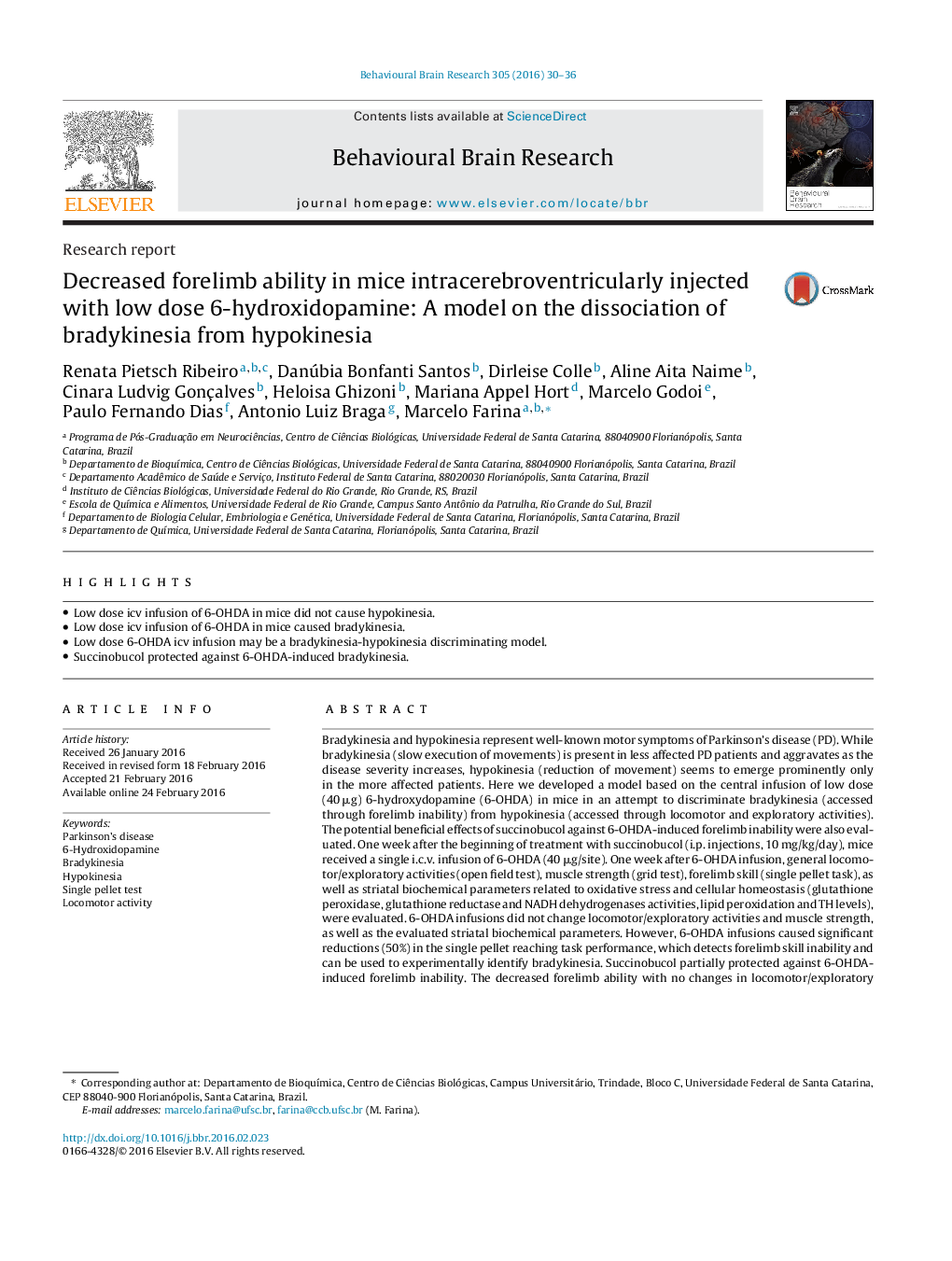| کد مقاله | کد نشریه | سال انتشار | مقاله انگلیسی | نسخه تمام متن |
|---|---|---|---|---|
| 4312144 | 1612928 | 2016 | 7 صفحه PDF | دانلود رایگان |
• Low dose icv infusion of 6-OHDA in mice did not cause hypokinesia.
• Low dose icv infusion of 6-OHDA in mice caused bradykinesia.
• Low dose 6-OHDA icv infusion may be a bradykinesia-hypokinesia discriminating model.
• Succinobucol protected against 6-OHDA-induced bradykinesia.
Bradykinesia and hypokinesia represent well-known motor symptoms of Parkinson's disease (PD). While bradykinesia (slow execution of movements) is present in less affected PD patients and aggravates as the disease severity increases, hypokinesia (reduction of movement) seems to emerge prominently only in the more affected patients. Here we developed a model based on the central infusion of low dose (40 μg) 6-hydroxydopamine (6-OHDA) in mice in an attempt to discriminate bradykinesia (accessed through forelimb inability) from hypokinesia (accessed through locomotor and exploratory activities). The potential beneficial effects of succinobucol against 6-OHDA-induced forelimb inability were also evaluated. One week after the beginning of treatment with succinobucol (i.p. injections, 10 mg/kg/day), mice received a single i.c.v. infusion of 6-OHDA (40 μg/site). One week after 6-OHDA infusion, general locomotor/exploratory activities (open field test), muscle strength (grid test), forelimb skill (single pellet task), as well as striatal biochemical parameters related to oxidative stress and cellular homeostasis (glutathione peroxidase, glutathione reductase and NADH dehydrogenases activities, lipid peroxidation and TH levels), were evaluated. 6-OHDA infusions did not change locomotor/exploratory activities and muscle strength, as well as the evaluated striatal biochemical parameters. However, 6-OHDA infusions caused significant reductions (50%) in the single pellet reaching task performance, which detects forelimb skill inability and can be used to experimentally identify bradykinesia. Succinobucol partially protected against 6-OHDA-induced forelimb inability. The decreased forelimb ability with no changes in locomotor/exploratory behavior indicates that our 6-OHDA-based protocol represents a useful tool to mechanistically study the dissociation of bradykinesia and hypokinesia in PD.
Journal: Behavioural Brain Research - Volume 305, 15 May 2016, Pages 30–36
